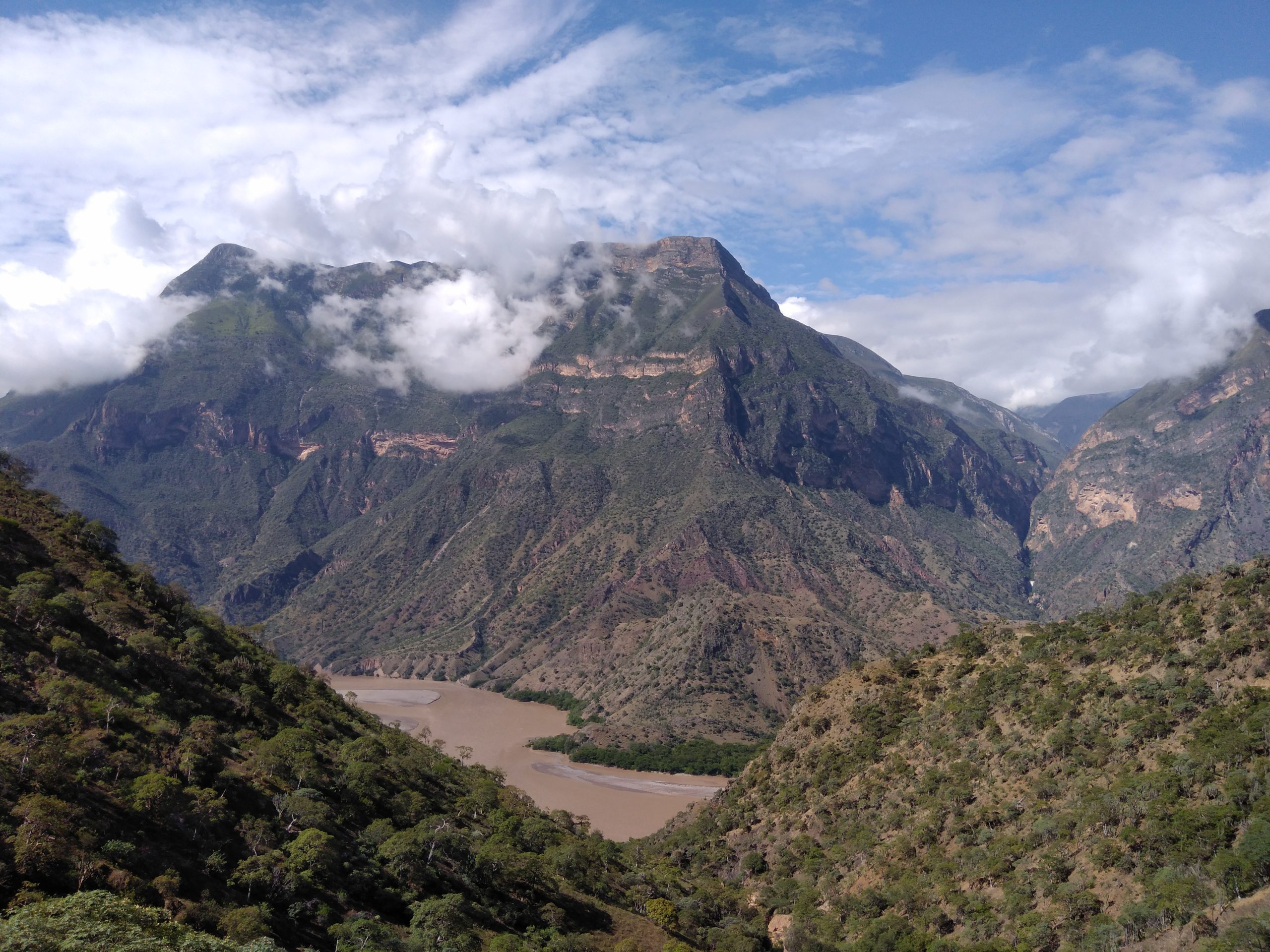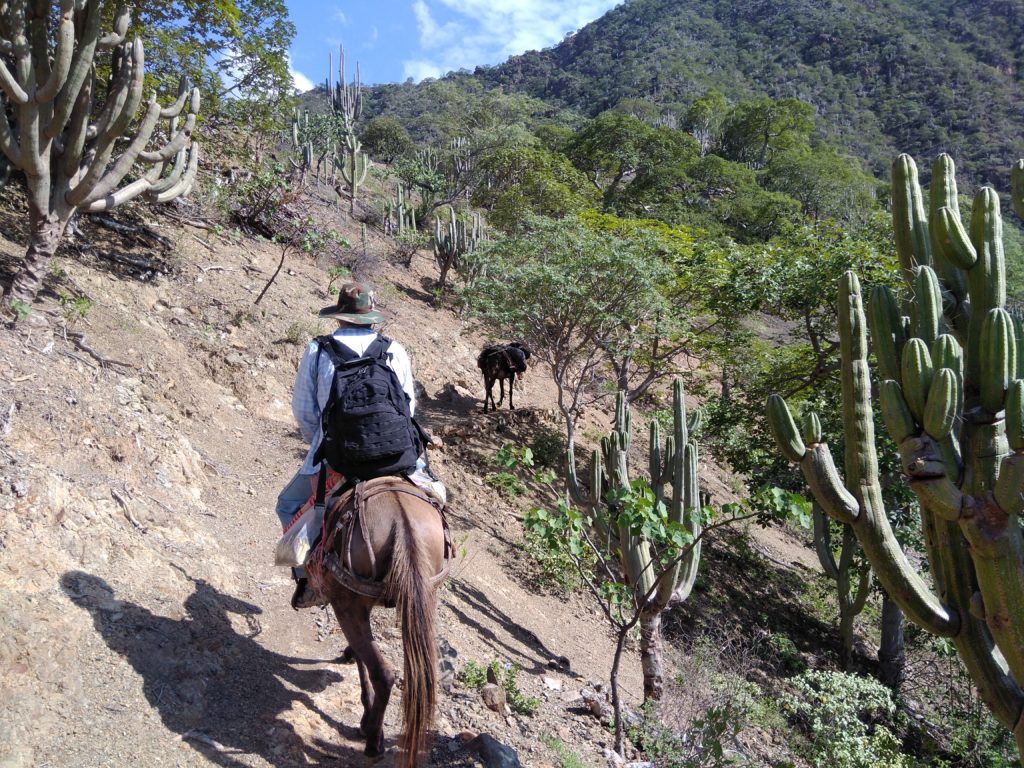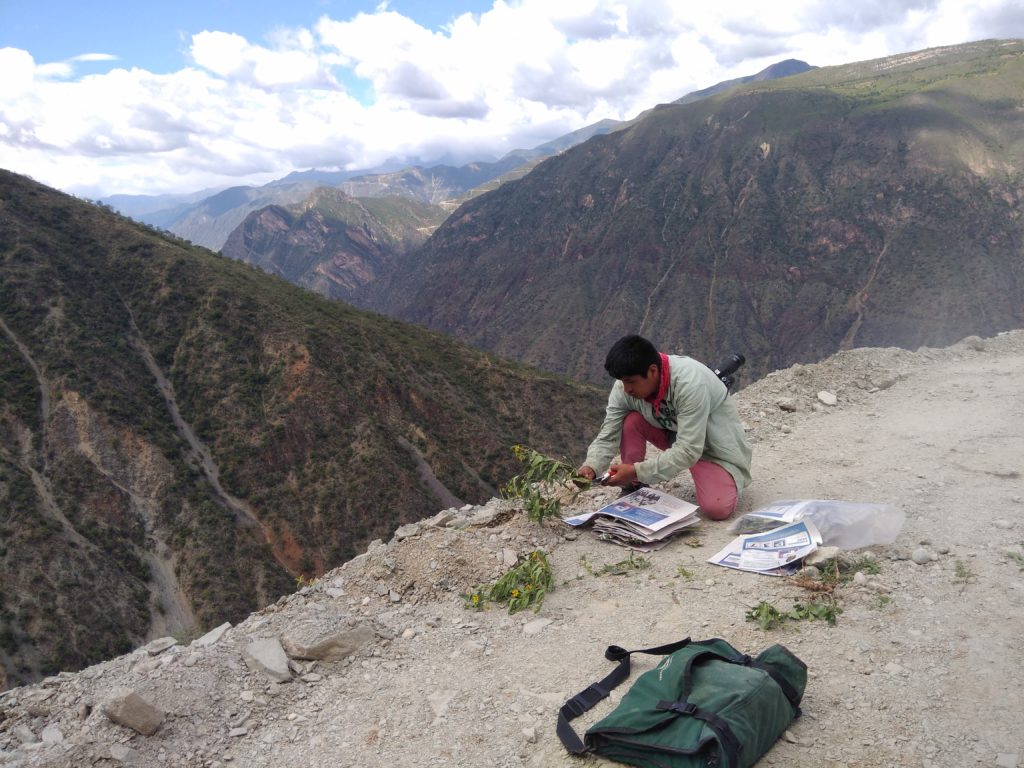Working in the dry forests of the Marañón valley in Peru can be pretty intense.

Firstly, as you might expect, it can get exceptionally hot. While clouds might gather around the mountain peaks to either side of the valley, the sun beats down remorselessly on the dry forest (and botanists) at the bottom of the valley. The open canopy means that it can be difficult to find a cooler spot for a moment’s rest in the shade. In addition, one of the features that makes dry forest different from savanna is that it does not have an understory of grass; this means that the sun beats down on bare rock, making it feel even hotter!
Secondly, the Marañón valley is incredibly steep-sided, even in the most accessible points (i.e. those with roads) a few km can see you gain (or lose) 3,000 m in altitude. The dry forests are draped along these slopes and cliffs up to the start of the cloud forest. This means that access for collecting plants can be difficult, if not impossible, so sometimes more traditional forms of transport need to be taken. Getting to know the ‘unique personality’ of a mule is one of the more unusual experiences necessary to visit the more remote parts of the valley.

Thirdly, the plants of the Marañón valley are all extremely well adapted to the dry forest; plants are usually succulent, silver in colour (with special hairs or scales) to reflect the light and possess spines to discourage animals from eating their leaves. This makes plant collection hazardous for unwary botanists and certainly makes the physical process of plant collection impossible when 10 cm spines burst out of the plant press.
Surprisingly, the dry forest also has a very strong and distinctive bad smell; many plant species contain aromatic compounds giving a strong unpleasant odour as you brush past their leaves or break their stems. Regardless of the family all the plants seem to have a similar scent so there becomes a definite “dry forest smell”.

Why work in this forest then?
Well, these ‘forgotten forests’ of the tropics are really understudied and highly threatened. While awareness has grown of the peril facing the Amazon rainforest and the savannas of Brazil, the destruction of the region’s dry forests has continued apace and largely unnoticed.
Also, every patch of dry forest is unique and full of endemic species. Recent analyses by the DRYFLOR plot network show that the species turnover (i.e. the number of species which are different between two different sites) is much higher in the dry forests than it is for savannas or rainforests.
Currently the RBGE is documenting the plant diversity in the Marañón valley in a Newton-Paulet funded project with the University of San Marcos, Peru. The dry forest of the Marañón valley are really poorly known, so we expect a lot of interesting new plants to come out of this project.
Further reading:
Särkinen, T.E., et al. (2011), Underestimated endemic species diversity in the dry inter‐Andean valley of the Río Marañón, northern Peru: An example from Mimosa (Leguminosae, Mimosoideae). Taxon, 60: 139-150
DRYFLOR (2016). Plant diversity patterns and their conservation implications in neotropical dry forests. Science 353: 1383-1387.
